MANAGING THE PROJECT PORTFOLIO TO IMPROVE PROFITS
November, 2014| Nick Castellina, Research Director, Business Planning and Execution
Report Highlights
Top performers look for ways to balance their project portfolios to better allocate resources, as well as align the project mix with overall organizational and financial goals and forecasts.
Best-in-Class organizations are 26% more likely to have implemented Project Portfolio Management (PPM) tools.
Organizations with PPM are 50% more likely to have the ability to perform profitability analysis.
Organizations with PPM are nine times as likely to have a holistic view of data across multiple projects.
This report, based on a survey of 135 respondents, outlines the challenges that organizations are facing in managing project portfolios, as well as the benefits that Project Portfolio
Management (PPM) solutions help to provide.
Successful project management that delivers profitable projects is a difficult task that requires careful planning, communication, and execution. But success in project management starts long before the work begins. In order for a project to be successful, it needs to have the right foundation. The potential costs must be lower than the potential revenue, and the resources to attain goals must be available. This foundation is defined as Project Portfolio Management (PPM). Effective PPM requires a holistic understanding of an organization's current and future projects in order to optimize profits through project selection and resource allocation. As the project portfolio grows, this becomes increasingly difficult. Top performers rely on technology to improve visibility into ongoing projects and make decisions that will result in profits. This report, based on a survey of 135 respondents, is intended to help you understand the challenges that organizations face in managing project portfolios and better harness the benefits that PPM solutions can provide.
Searching for Profits
Aberdeen's 2014 Project and Portfolio Management Benchmark Survey uncovered the top challenges that organizations face in Project Portfolio Management.
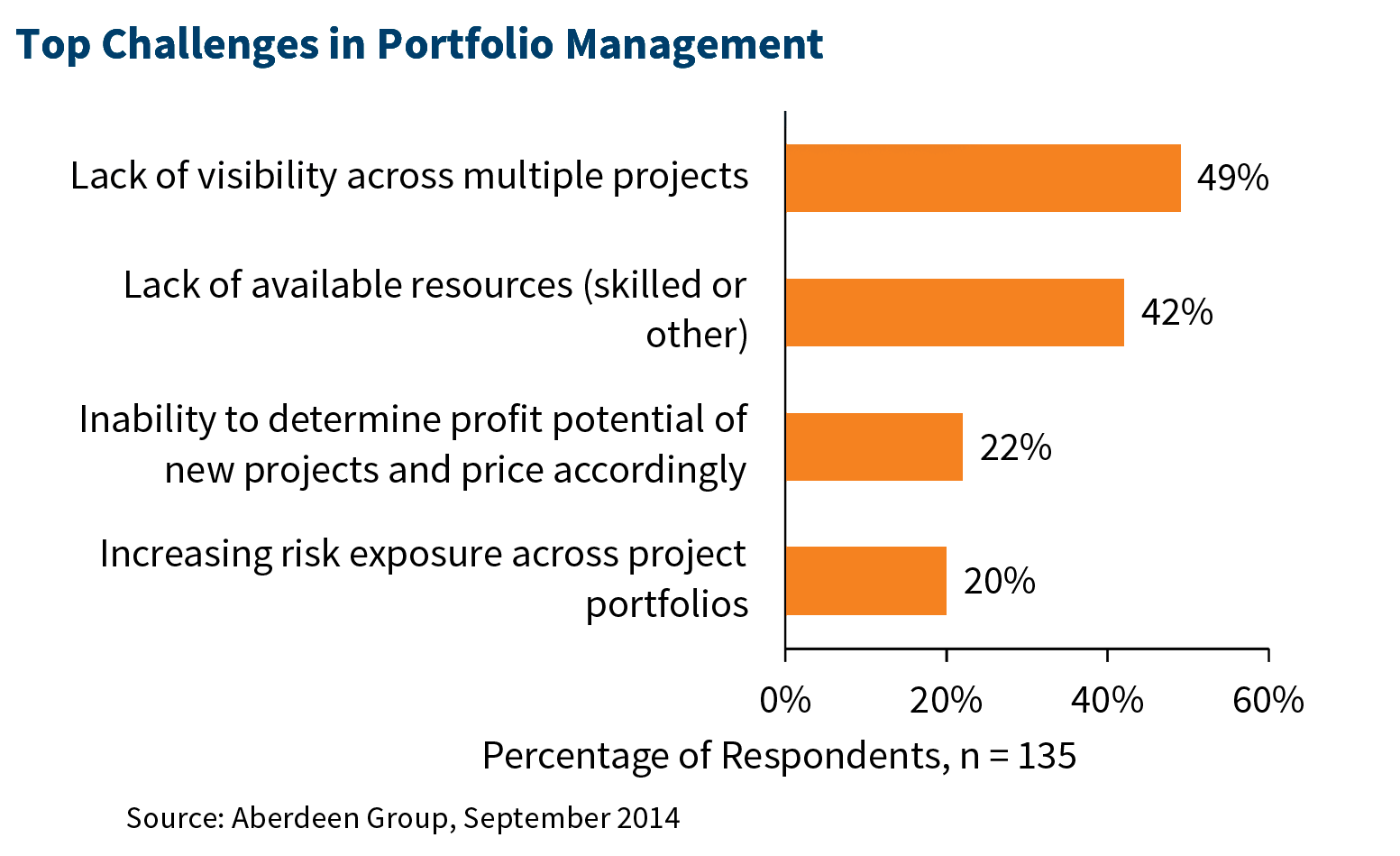
Many of these issues stem from the leading challenge: a lack of visibility across multiple projects. Organizations have difficulty understanding where projects stand, the costs that are occurring, and how resources are being utilized. This makes resource management extremely difficult when employees, cash, and materials are limited. Further, a lack of visibility leaves organizations with the potential to be blindsided when it comes to the impact of risk factors. How can the organization properly manage projects individually and holistically if it is not aware of the challenges facing certain projects that could impact other projects?
Risk also plays a significant factor in selecting projects to bid and embark on. There is always the potential of selecting a project that has little chance of being completed profitably. In order to price projects effectively, organizations need insight into potential costs and lessons learned from similar projects. Portfolio optimization is a crucial aspect of PPM that requires enhanced visibility and risk identification and management.
In order to combat these pressures, Best-in-Class organizations utilize available information to make decisions that lead to profits.
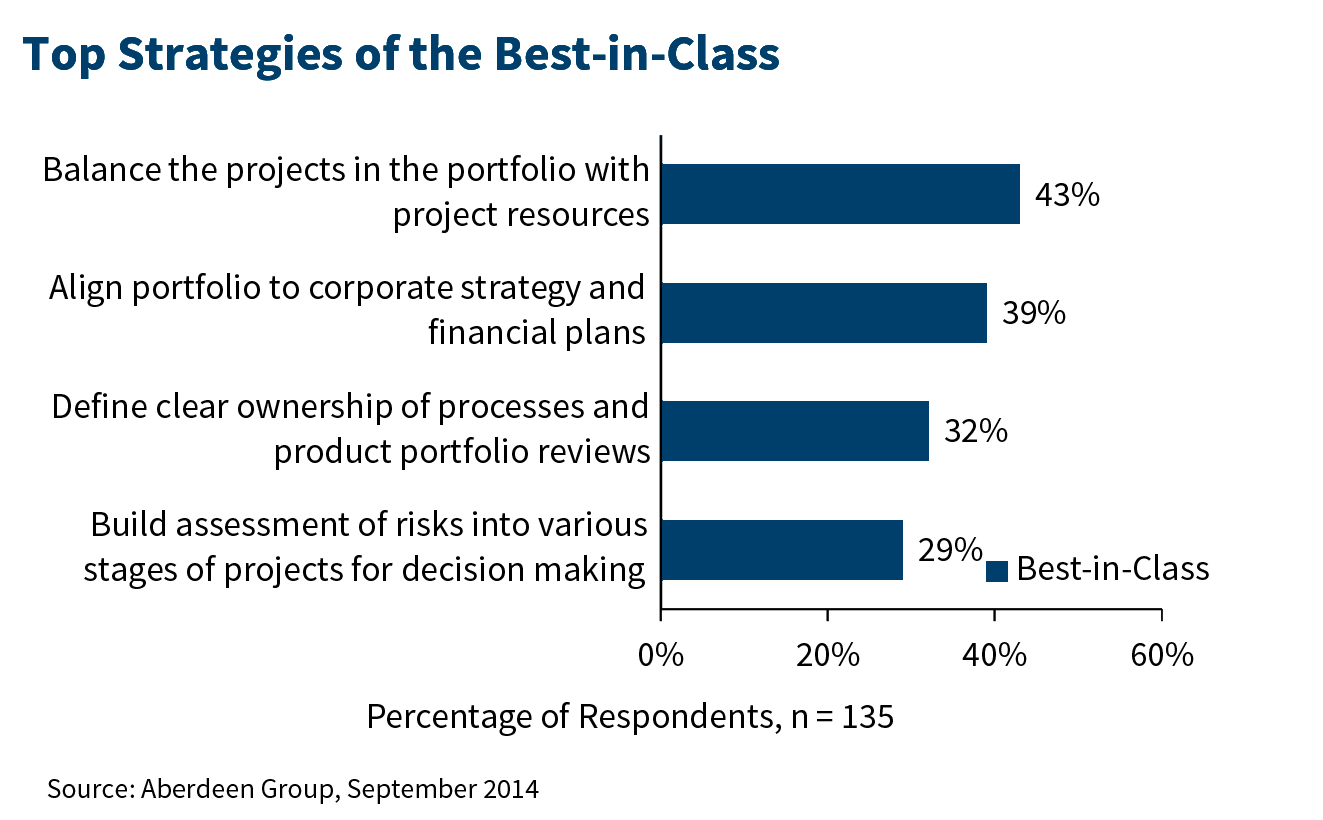
For example, top performers look for ways to balance their project portfolios to better allocate resources, as well as align the project mix with overall organizational and financial goals and forecasts. They define ownership of portfolio management and give leaders the tools they need to take an organization wide approach to planning. Since this is a volatile business environment, top performers ensure that risk assessment plays a significant part in planning. Whether selecting projects or managing ongoing projects, top performers must provide access to information that can lead to informed, predictive decisions.
Selecting, Staffing, and Learning with PPM
In order to provide visibility across the project portfolio and aid decision-making, Best-in-Class organizations are 26% more likely to have implemented PPM tools. PPM solutions are used to optimize project portfolios through the selection of projects and resource allocation. These solutions also often contain, or are supplemented by, project management solutions. They contain capabilities that enable value assessment, scenario-modeling, and resource allocation through features such as dashboards, scorecards, and templates.
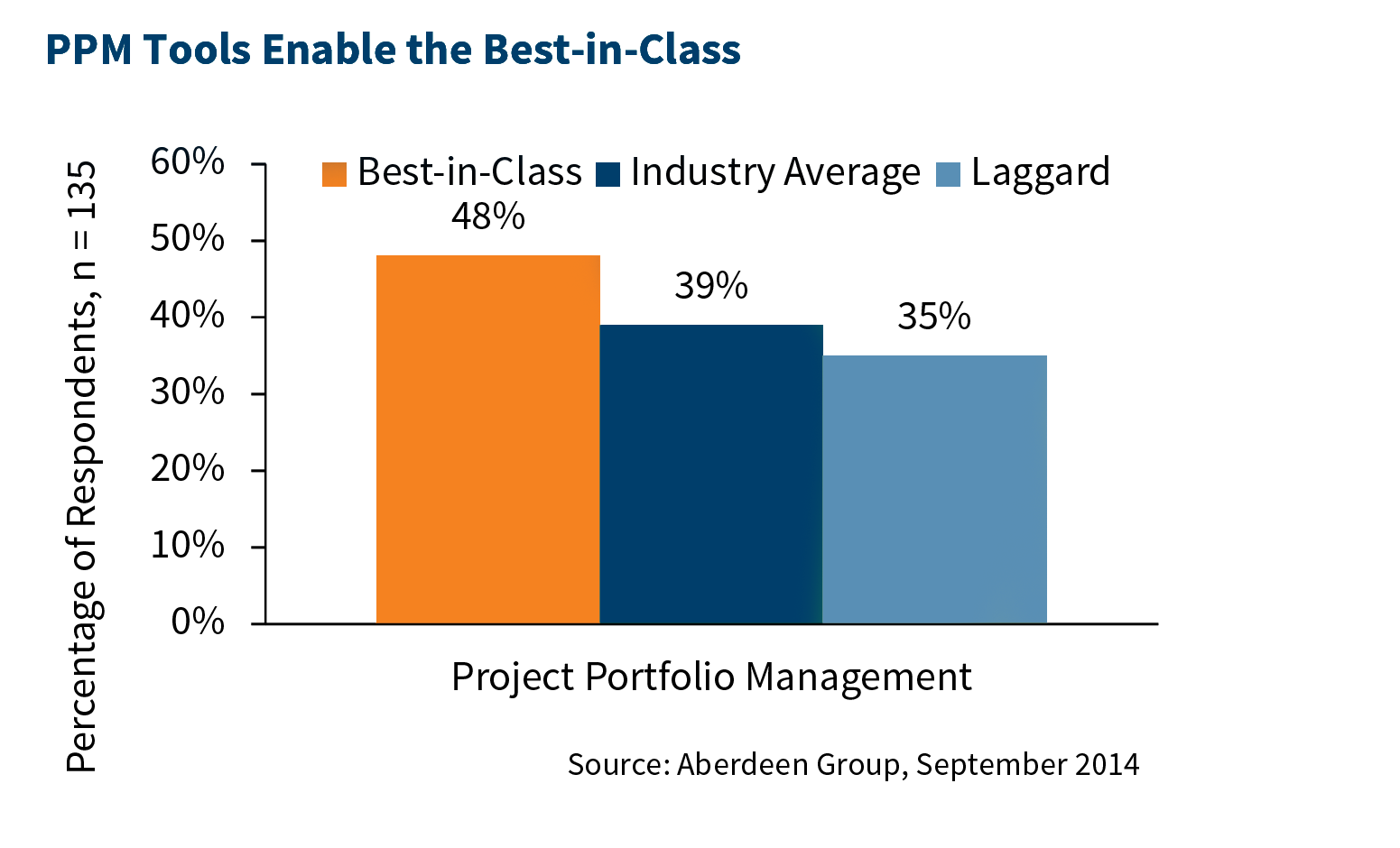
But what does a PPM solution actually contain? Compare organizations with PPM solutions to those without.
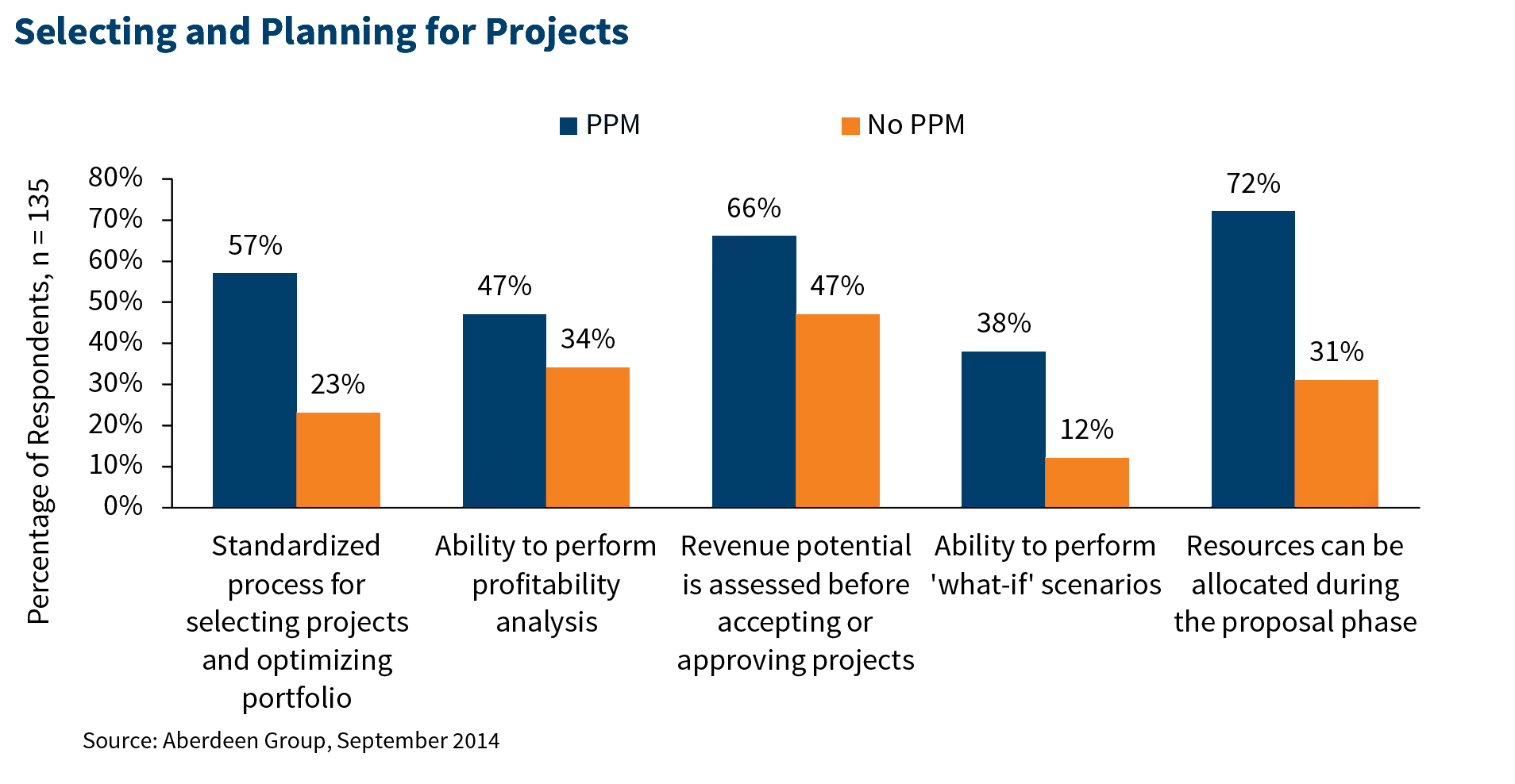
Due to the data and functionality contained within PPM solutions,organizations with them are over twice as likely to have a standardized process for selecting projects and optimizing their portfolio. Organizations must ensure that the portfolio alignment fits with the organization's strengths and goals and that potential money pits are avoided. This is possible because organizations with PPM are 50% more likely to have the ability to perform profitability analysis - ensuring that they do not select projects that do not have the potential to provide profits. In fact, organizations with PPM solutions are over three times as likely to have the ability to perform what-if scenarios. They can mix and match variables to understand likely outcomes utilizing risk information. For example, what will happen if a certain amount of skilled resources are assigned to a project? How will that change costs and project timelines? Additionally, what impact will that have on other projects? This is a crucial component for enabling the capability to allocate resources during the proposal phase, a capability that organizations with PPM are 2.3 times as likely to have.
Once a potentially profitable project has been added to the portfolio, it must be managed effectively. This requires individual attention as well as an understanding of where the project fits into the mix. When resources are scarce, organizations must be able to utilize them efficiently. Therefore, organizations with a PPM tool are nine times as likely to have a holistic view of data across multiple projects. This creates a centralized repository for all project information, including costs, time lines, requirements, and resource workload. Projects should not be managed in silos, and this information is essential to ensuring that projects are managed in relation to each other.
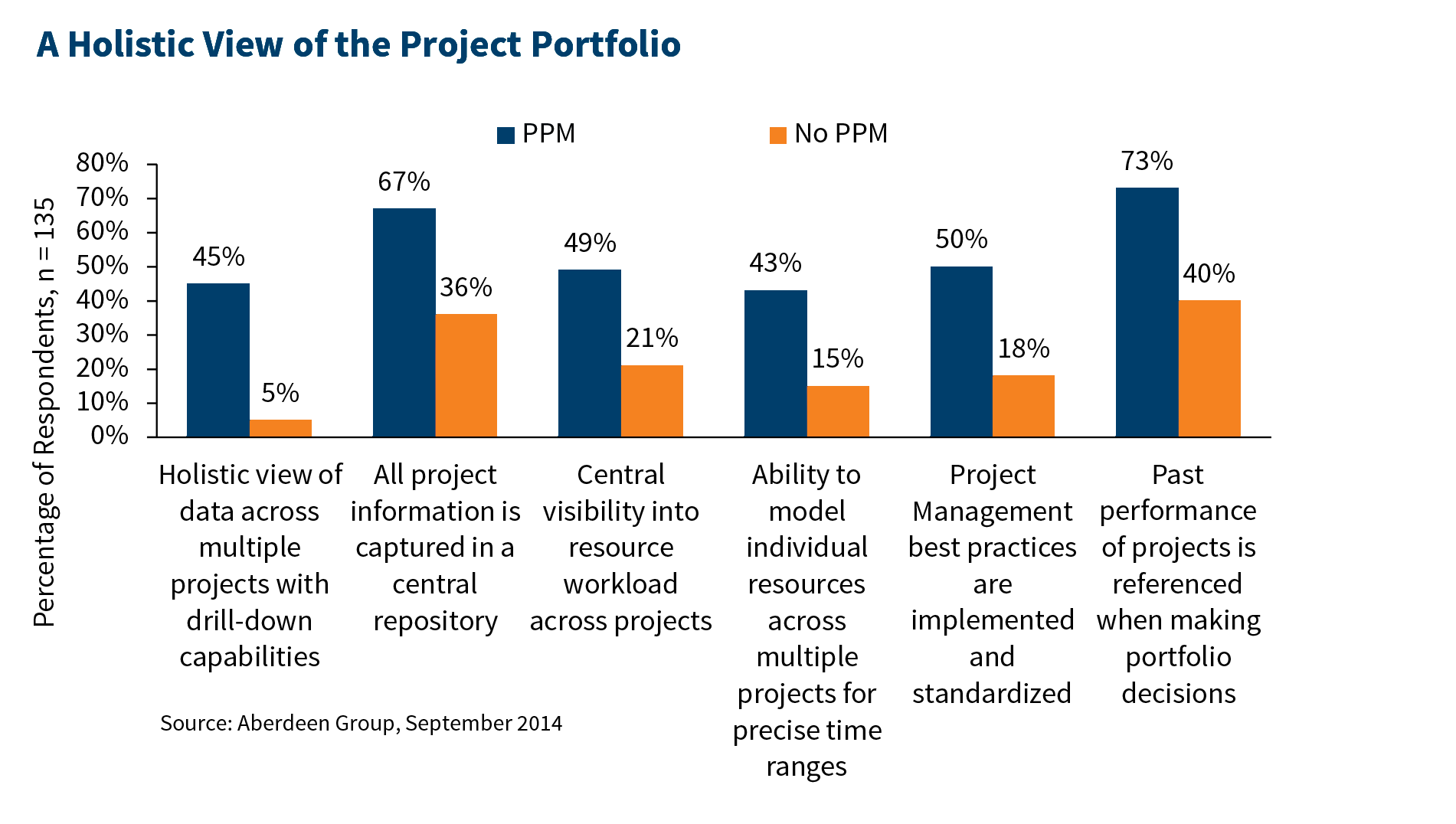
Central visibility enables organizations to allocate resources effectively, as well as enforce Project Management best practices across the organization. But a major benefit of centralized repositories that is often overlooked is the ability to retain information for future reference. Many project-based organizations complete multiple projects that are similar to each other every year. The information gained from one project may inform another future project. This can be invaluable in project management as well as project selection. In fact, organizations with PPM are 83% more likely to be able to reference past project performance when making portfolio decisions.
Key Takeaways and Recommendations
For project-based firms with multiple projects happening at the same time, it can be difficult to determine which are contributing to, or subtracting from, the bottom line. Even though they may be for separate clients, each project impacts other projects in ways that may be unseen. Top performing organizations rely on PPM tools in order to not only determine which projects are profitable and optimize the portfolio, but also to manage skilled resources and materials across those projects. This helps the organization to plan more holistically and should lead to improved profits. Organizations with PPM tools are more likely to be able to take advantage of the following capabilities:
- Organizations with PPM are 50% more likely to have the ability to perform a profitability analysis.
- Organizations with PPM solutions are over three times as likely to have the ability to perform what-if scenarios.
- Organizations with PPM are nine times as likely to have a holistic view of data across multiple projects.
- Organizations with PPM are almost three times as likely to be able to allocate resources across multiple projects for precise time ranges.
PPM is the key to optimizing the project portfolio to improve profitability.
For more information on this or other research topics, please visit www.aberdeen.com.
About Aberdeen Group
For 26 years, Aberdeen Group has published research that helps businesses worldwide improve performance. We
identify Best-in-Class organizations by conducting primary research with industry practitioners. Our team of
analysts derives fact-based, vendor-agnostic insights from a proprietary analytical framework independent of
outside influence. The resulting research content is used by hundreds of thousands of business professionals to
drive smarter decision making and improve business strategy.
Aberdeen's content marketing solutions help B2B organizations take control of the Hidden Sales Cycle through
content licensing, speaking engagements, custom research, and content creation services. Located in Boston, MA,
Aberdeen Group is a Harte Hanks Company.
This document is the result of primary research performed by Aberdeen Group. Aberdeen Group's methodologies provide for objective fact-based research and represent the best
analysis available at the time of publication. Unless otherwise noted, the entire contents of this publication are copyrighted by Aberdeen Group, Inc. and may not be reproduced,
distributed, archived, or transmitted in any form or by any means without prior written consent by Aberdeen Group, Inc.